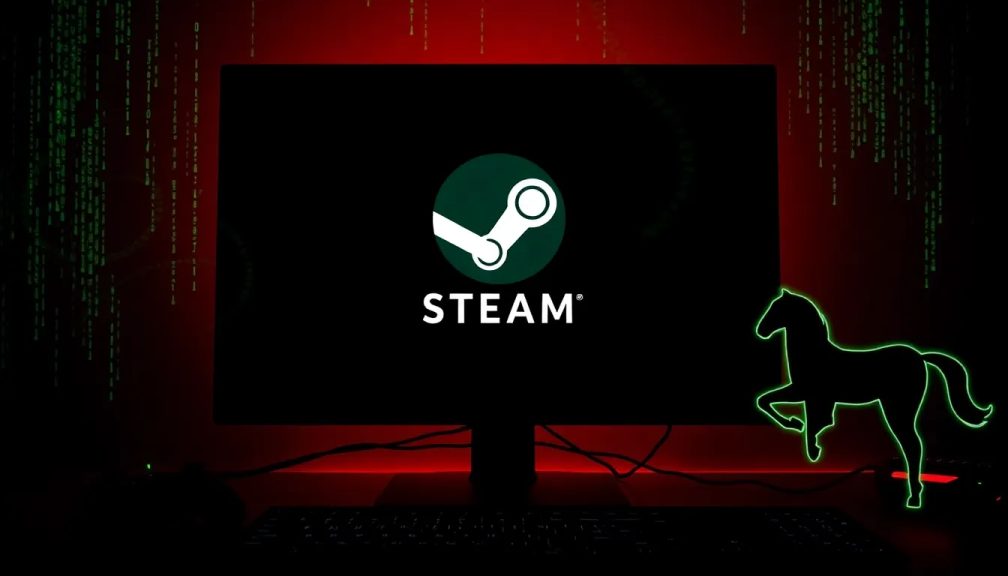Malware targets Steam with crypto trojan in game update

Steam, the leading platform for PC gaming, has recently been under fire for a surge in malware incidents. While it remains the most popular choice among gamers, the increase in security breaches raises significant concerns. The latest incident involves a seemingly harmless game update that turned out to be a discreet vehicle for a crypto trojan, alarming players and security experts alike.
Recent Malware Incidents on Steam
Steam is no stranger to malware attacks, particularly due to its expansive user base and open platform for game developers. Unfortunately, the popularity of Steam also makes it an attractive target for cybercriminals. The most recent case involves a free-to-play game called BlockBlasters, which was found to contain malicious software designed to drain cryptocurrency from users' wallets.
In light of this incident, it's crucial to understand the implications of such malware attacks and how they can exploit the gaming community. The trojan, discovered during a routine analysis, was embedded in a post-launch update of the game, enabling it to stealthily access users' Steam login information and linked crypto wallets.
How BlockBlasters Operated
BlockBlasters was initially released as a verified game on Steam, but it quickly vanished from the platform just months after its launch. The malicious update included a "cryptodrainer" program that reportedly stole around $150,000 from unsuspecting players. Among the victims was a streamer who lost over $30,000—funds that were intended to cover their cancer treatment expenses.
This incident highlights several key points about how such malware operates:
- Stealth Installation: The malware was installed during an update, making it difficult for users to detect.
- Targeted Attacks: The attackers specifically focused on users known to be involved in cryptocurrency.
- Information Theft: The trojan sought out and stole sensitive login information, enabling the theft of crypto assets.
Cybercriminals often employ social engineering tactics to ensure their attacks are successful. In the case of BlockBlasters, the operators of the malware targeted specific individuals through spear-phishing campaigns on social media platforms like Twitter. These tactics can include:
- Personalized Messages: Crafting messages that resonate with the targets, increasing the chance of engagement.
- Fake Offers: Creating false incentives related to cryptocurrency to lure victims into downloading malicious content.
- Exploiting Trust: Using impersonation to gain credibility among potential victims.
Previous Malware Cases on Steam
This is not an isolated incident; it marks the fourth significant malware outbreak on Steam in 2025 alone. Previous cases included:
- In July, a different game update was found to have similar issues.
- In March, another malware incident raised alarms about Steam's security protocols.
- In February, malware was found that affected user data.
These recurring issues have prompted discussions about the adequacy of Steam's security measures and the need for improved protections against such threats.
Valve's Response and Security Measures
As of now, Valve, the parent company of Steam, has not publicly commented on the investigation surrounding BlockBlasters or the broader issue of malware on its platform. However, the company has faced increasing pressure to enhance its security protocols. Some potential measures that could be implemented include:
- Regular Security Audits: Conducting thorough audits of games before they are approved for release.
- User Education: Informing players about the risks associated with downloading games and updates from lesser-known developers.
- Enhanced Reporting Systems: Allowing users to report suspicious activities or games quickly.
The Future of Gaming Security
The rise of cryptocurrency has introduced new vulnerabilities in online platforms, particularly those that engage with a tech-savvy audience like gamers. As malware incidents continue to occur, both developers and players must stay vigilant. Here are several strategies to enhance security:
- Use Two-Factor Authentication: Always enable this feature on accounts to provide an extra layer of security.
- Monitor Account Activity: Regularly check account activity for any unauthorized transactions or logins.
- Stay Informed: Keep abreast of the latest security threats and how to mitigate them.
For further insights on this topic, you can check out this video that discusses the implications of malware on Steam:
As the gaming industry evolves, so too must the approaches to security. With the stakes high, both developers and players need to work together to create a safer environment for everyone involved.




Leave a Reply